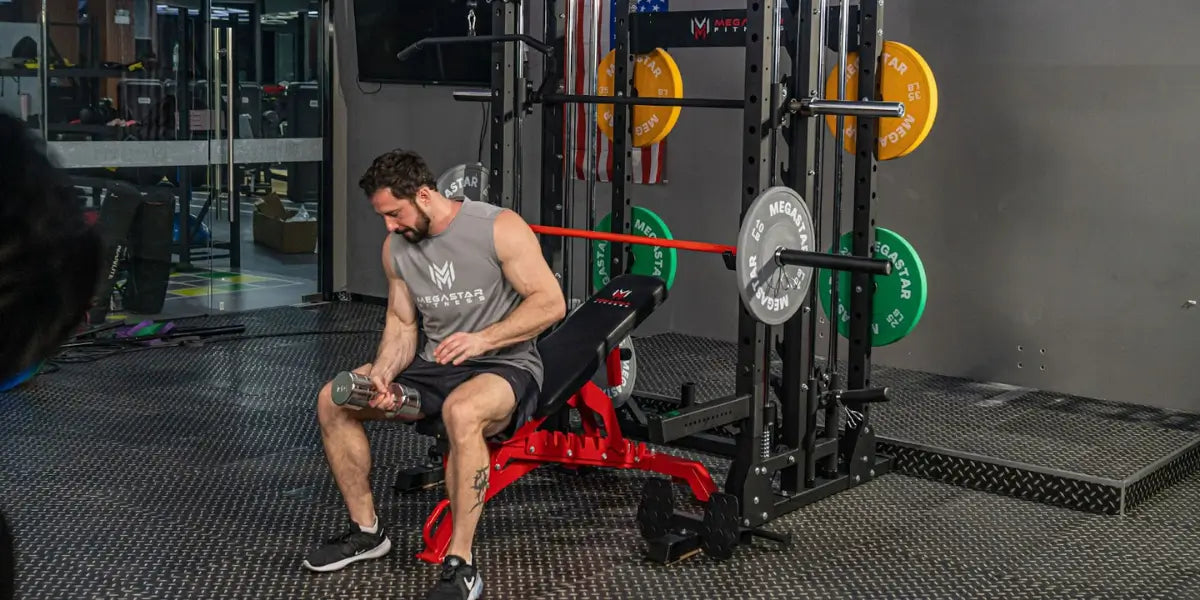-
Men’s Olympic Weightlifting Bar: Weighs 20 kilograms (44 pounds).
-
Women’s Olympic Weightlifting Bar: Weighs 15 kilograms (33 pounds).
These standards come from the International Weightlifting Federation (IWF) and apply to competition-grade bars worldwide.
When training with these bars, pairing them with a sturdy squat rack is essential. A quality squat rack stabilizes the barbell and offers adjustable safety pins and spotter arms, acting as a crucial safeguard during heavy lifts. This setup allows you to lift confidently while minimizing injury risk.
Common Confusion Between Different Types Of Barbells
What Sets Olympic Bars Apart?
Olympic weightlifting bars differ in several key ways from other barbells:
-
Weight: Standard bars vary widely (15–25 pounds), but Olympic bars have fixed, standardized weights.
-
Length: Men’s bars are about 7.2 feet long; women’s bars are slightly shorter at around 6.6 feet.
-
Diameter: Olympic bars are thicker—men’s bars are approximately 28 mm and women’s are about 25 mm.
-
Sleeve Rotation: Olympic bars feature rotating sleeves to reduce torque and allow smoother, more explosive lifts.
Other Common Bar Types
-
Powerlifting Bars: Built stiffer for max strength lifts like bench press, squat, and deadlift.
-
Technique Bars: Lightweight bars (5–15 kg) designed for practicing form and for beginners.
-
Standard Bars: Non-Olympic bars, generally less durable and varying in weight.
Why Knowing The Exact Weight Matters
Precision Is Key For Effective Training
-
Programming Accuracy: To track progress accurately, you need to know the exact bar weight for proper plate loading.
-
Smart Buying Decisions: Choosing the right bar for your needs saves money and avoids frustration.
-
Safety and Performance: Using the correct bar weight ensures proper technique and reduces the risk of injury.
Additionally, training inside a well-built squat rack enhances safety. The rack’s safety catches act as your fallback if you fail a lift, giving you the confidence to push harder without fear.

How To Choose The Right Olympic Bar For You
Match Your Training Goals
-
Beginners: Start with lighter technique bars before advancing to full Olympic bars.
-
Home Gym Users: A quality 20 kg men’s bar or 15 kg women’s bar covers most training needs.
-
Competitive Lifters: Look for IWF-certified bars that meet strict competition specifications.
Key Specs To Consider Beyond Weight
-
Bar Length and Diameter: Choose dimensions that fit your grip and lifting style.
-
Knurling Texture: The grip pattern varies; aggressive knurling offers better grip but can feel harsh to beginners.
-
Sleeve Quality and Rotation: Smooth, durable bearings improve lifting fluidity.
-
Tensile Strength: Higher tensile strength indicates better durability under heavy use.
Frequently Asked Questions About Olympic Bars
Are all Olympic bars exactly 20 kg or 15 kg?
Competition bars follow these standards, but training and specialty bars may differ in weight.
Can Women Use Men’s Bars?
Yes. Many women train with men’s bars due to grip preference or increased strength.
What’s the Difference Between Olympic and Powerlifting Bars?
Olympic bars have rotating sleeves and are designed for dynamic lifts; powerlifting bars are stiffer and optimized for controlled max lifts.
Conclusion
Knowing how much an Olympic weightlifting bar weighs—20 kg for men’s and 15 kg for women’s bars—is fundamental for smart training and equipment choices. Combined with a quality squat rack, you get a safe, efficient training setup that lets you lift confidently and effectively, whether training at home or competing. Understanding these details helps you pick the right bar and train smarter.



Leave a comment
This site is protected by hCaptcha and the hCaptcha Privacy Policy and Terms of Service apply.